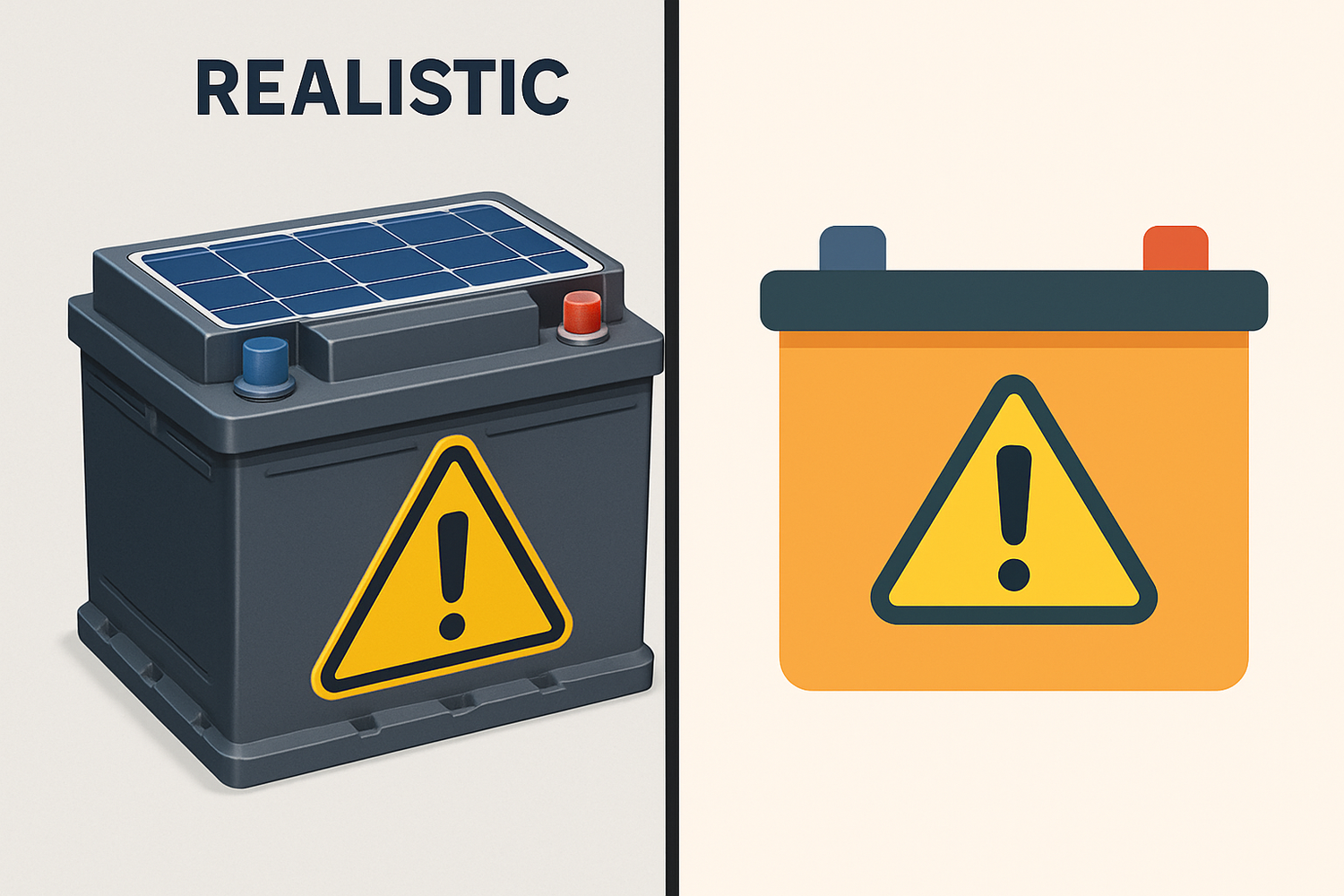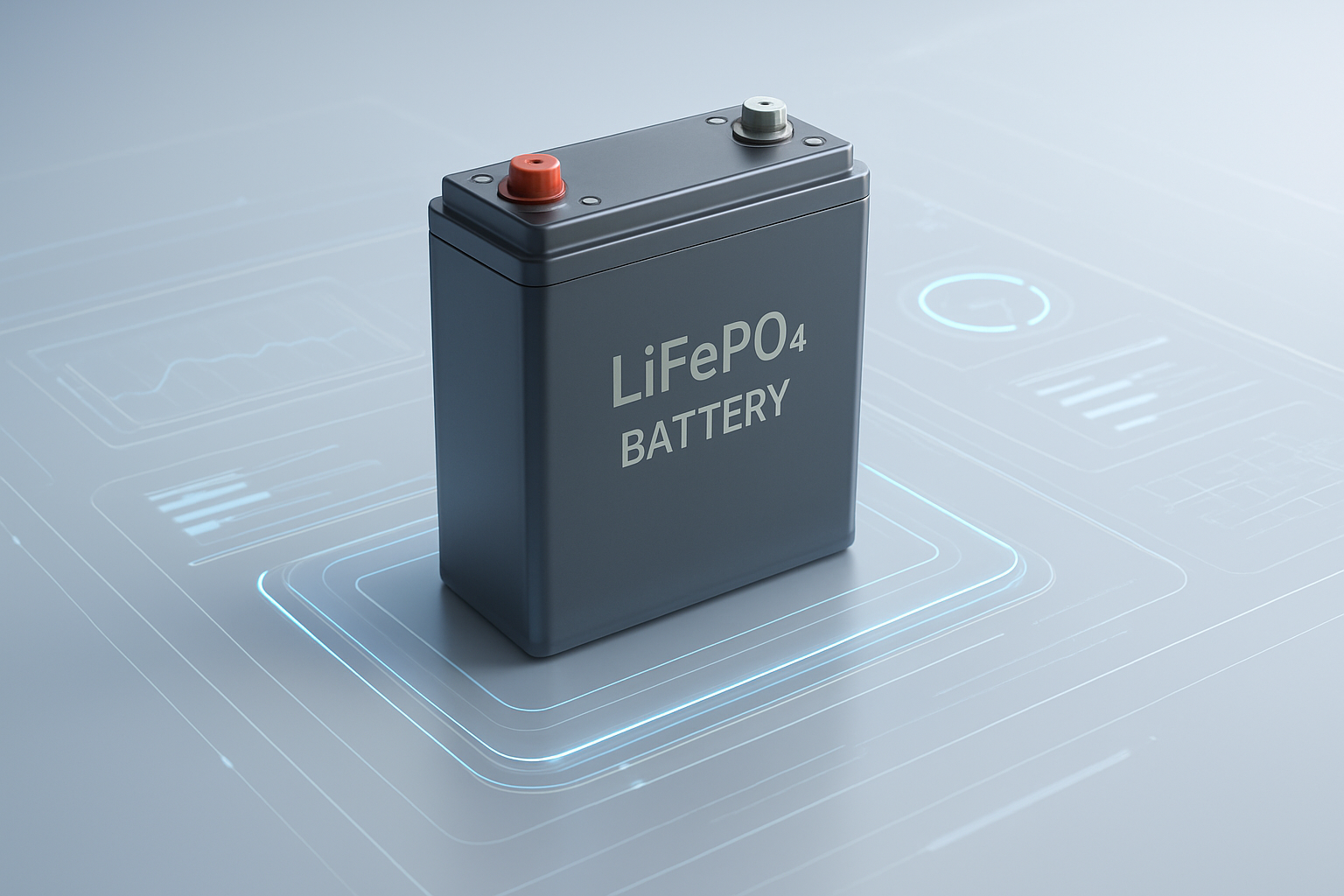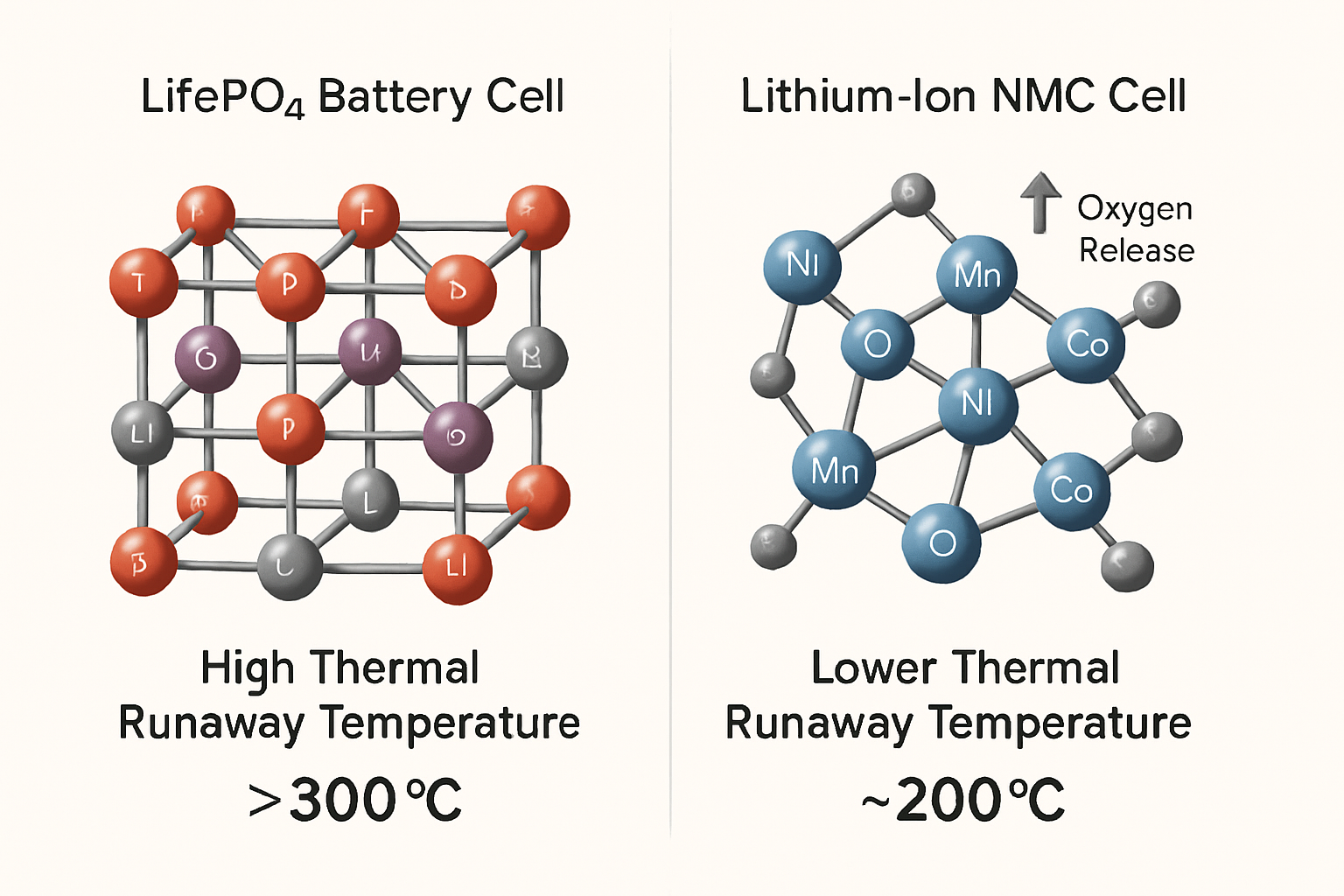Lithium Iron Phosphate (LiFePO4) batteries are central to modern solar storage, known for their safety and longevity. However, a wave of misinformation threatens to undermine their performance and lifespan. Understanding the correct way to charge these advanced batteries is crucial for protecting your energy investment. This article cuts through the noise, separating charging myths from reality to ensure you get the most out of your solar energy system.
The Foundation of LiFePO4 Charging
To appreciate the nuances of charging, it's important to recognize what sets LiFePO4 technology apart and the critical role of its internal management system.
What Makes LiFePO4 Different?
Unlike other lithium-ion chemistries, LiFePO4 uses a phosphate-based cathode material, which is inherently more stable. This chemical stability significantly reduces the risk of thermal runaway, making it a safer choice for home energy storage. Furthermore, these batteries offer a much longer cycle life, often capable of thousands of charge-discharge cycles before significant capacity loss, far exceeding traditional lead-acid batteries.
The Role of the Battery Management System (BMS)
Think of the Battery Management System (BMS) as the brain of your battery pack. This electronic system is not just an add-on; it's a vital component that manages all charging and discharging operations. A quality BMS protects the cells from operational stress by preventing over-voltage, under-voltage, over-current, and extreme temperatures. It also performs cell balancing, ensuring all cells within the pack maintain a similar state of charge, which is crucial for maximizing capacity and lifespan. The growth in battery storage investment, which more than doubled in 2022, underscores the technology's importance in creating flexible and reliable energy systems, as noted in the IEA's World Energy Investment 2023 report.
Myth-Busting: Common LiFePO4 Charging Fallacies
Old habits from lead-acid batteries and general confusion about lithium technology have created several persistent myths. Let's set the record straight.
Myth 1: You Must Fully Discharge Batteries Before Recharging
Reality: This is a harmful holdover from old Nickel-Cadmium (Ni-Cd) batteries that suffered from a 'memory effect'. LiFePO4 batteries have no memory effect. In fact, they prefer shallow, partial charges over deep discharge cycles. Regularly draining the battery to empty puts unnecessary stress on the cells and will shorten their lifespan. Frequent partial charging is not only safe but beneficial.
Myth 2: Any Lithium or 12V Charger Will Work
Reality: This is a dangerous and costly mistake. LiFePO4 batteries require a specific charging profile, known as CC/CV (Constant Current/Constant Voltage). Using a charger designed for lead-acid or other lithium chemistries can lead to overcharging, which permanently damages the cells. For a 12V LiFePO4 battery, the charging voltage should be precisely controlled, typically between 14.2V and 14.6V.
Myth 3: Faster Charging is Always Better
Reality: While LiFePO4 batteries can be charged much faster than lead-acid batteries, there are limits. Always adhere to the manufacturer's recommended charge rate, typically expressed as a 'C-rate'. Charging at a moderate rate, such as 0.5C (half the battery's capacity in amps), is gentler and promotes a longer service life. Pushing the limits with excessively high currents generates extra heat and stress.
Myth 4: Temperature Doesn't Matter Much for Charging
Reality: Temperature is a critical factor for both safety and longevity. The most important rule is to never charge a LiFePO4 battery below freezing (0°C or 32°F) without a dedicated low-temperature battery or heating system. Charging in freezing conditions can cause irreversible lithium plating, which permanently reduces capacity and can create internal shorts. A quality BMS will have low-temperature protection to prevent this. High temperatures (above 45°C or 113°F) also accelerate degradation and should be avoided.
Best Practices for Safe and Efficient Charging
Moving beyond myths, applying the correct techniques will ensure your solar storage system operates flawlessly for years to come.
Selecting the Right Charger and Settings
The golden rule is to use a charger or solar charge controller with a dedicated LiFePO4 mode. This ensures the voltage and current parameters are correct. Disable any 'equalization' settings, as this high-voltage process is designed for lead-acid batteries and is damaging to LiFePO4 cells. Also, LiFePO4 batteries do not require a continuous 'float' charge; once full, the charging should stop completely.
Charging Parameter Comparison
| Feature | LiFePO4 Battery | Sealed Lead-Acid (AGM) |
|---|---|---|
| Recommended Charge Voltage (12V) | 14.2V - 14.6V | 14.4V - 14.8V |
| Float Charge | Not Recommended/Needed | Required (~13.6V) |
| Equalization Mode | No (Damaging) | Recommended Periodically |
| Recommended Charge Rate | Up to 1.0C (0.5C is optimal) | ~0.2C - 0.3C |
| Charge Efficiency | ~95% or higher | ~80-85% |
Optimizing Your Solar Charge Controller
For solar applications, a Maximum Power Point Tracking (MPPT) charge controller is highly recommended for its efficiency. Program it with the specific bulk and absorption voltages recommended by your battery manufacturer. Proper configuration ensures you capture the maximum amount of solar energy while protecting your battery bank.
Integrating LiFePO4 Charging with Your Solar Array
A holistic system view ensures your solar panels and batteries work in harmony for optimal performance.
Sizing Your Array for Your Battery Bank
Your solar array must be large enough to meet your daily energy needs and fully charge your battery bank, especially during shorter winter days. An undersized array will consistently leave your batteries in a low state of charge, which can affect their long-term health. A well-sized system ensures your batteries are properly replenished, ready to power your home when the sun isn't shining.
Real-World Performance Metrics
Proper charging directly impacts key performance indicators. As explained in the ultimate reference on solar storage performance, metrics like Round-Trip Efficiency (RTE) and Depth of Discharge (DoD) are critical. Correct charging maximizes RTE, meaning less energy is lost in the storage cycle. By avoiding deep discharges and using correct voltage settings, you also preserve the battery's usable capacity and extend its cycle life, getting true value from your system.
A Clear Path to Battery Longevity
Charging LiFePO4 batteries for your solar storage system is not complicated, but it demands a departure from outdated practices. By understanding and respecting the unique needs of this chemistry—using the right charger, minding the temperature, and trusting the BMS—you protect your investment. These best practices ensure maximum safety, reliability, and a long service life, empowering you with true energy independence.
Frequently Asked Questions
Can I use a lead-acid battery charger for a LiFePO4 battery?
It is strongly discouraged. Lead-acid chargers have different voltage profiles and often include an equalization phase that will damage a LiFePO4 battery. Always use a charger specifically designed for LiFePO4 chemistry or one with a dedicated LiFePO4 mode.
What happens if I charge a LiFePO4 battery in freezing temperatures?
Charging below 0°C (32°F) causes a damaging process called lithium plating, where metallic lithium builds up on the anode. This damage is irreversible, permanently reduces capacity, and can create a safety hazard. A quality BMS should prevent charging in these conditions.
How often should I 'balance' my LiFePO4 battery cells?
You do not need to do this manually. The Battery Management System (BMS) automatically handles cell balancing, typically during the final stage of the charging cycle, to ensure all cells are at an equal voltage.
Is it better to leave my LiFePO4 battery on a 'float' charge?
No. Unlike lead-acid batteries, LiFePO4 batteries do not benefit from or require a float charge. Once the battery is fully charged, it is best to stop the charge current completely. A proper LiFePO4 charger or solar charge controller will do this automatically.





Leave a comment
All comments are moderated before being published.
This site is protected by hCaptcha and the hCaptcha Privacy Policy and Terms of Service apply.